Rays in the Shadows: Batoid Diversity, Occurrence, and Conservation Status in Fiji
January 2024
Kerstin Glaus, Luke Gordon, Tom Vierus, Natasha D. Marosi and Helen Sykes
Keywords: Elasmobranchs • Participatory Science • Environmental DNA • Biodiversity • Oceania • Conservation • Distribution • Endangered Species
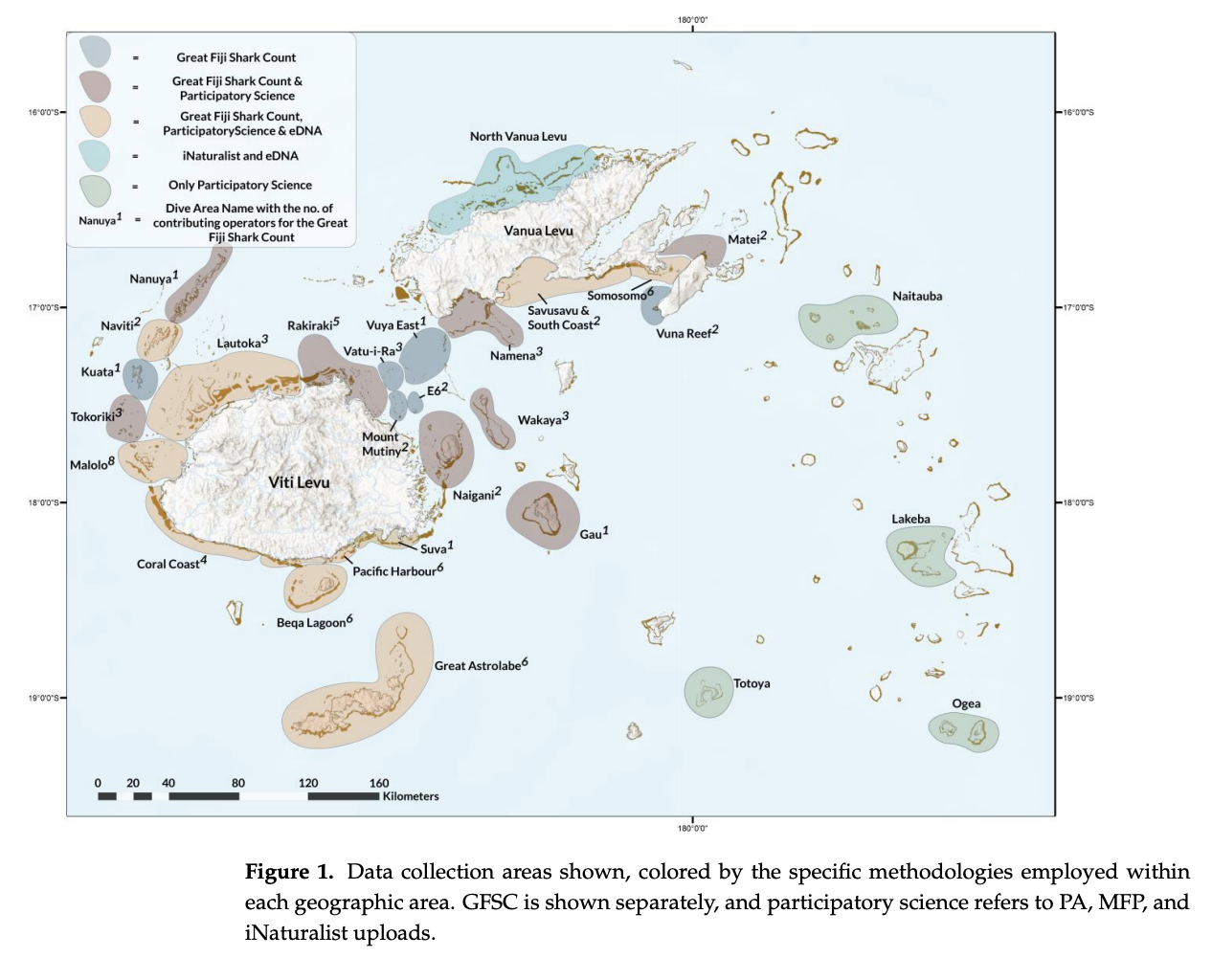
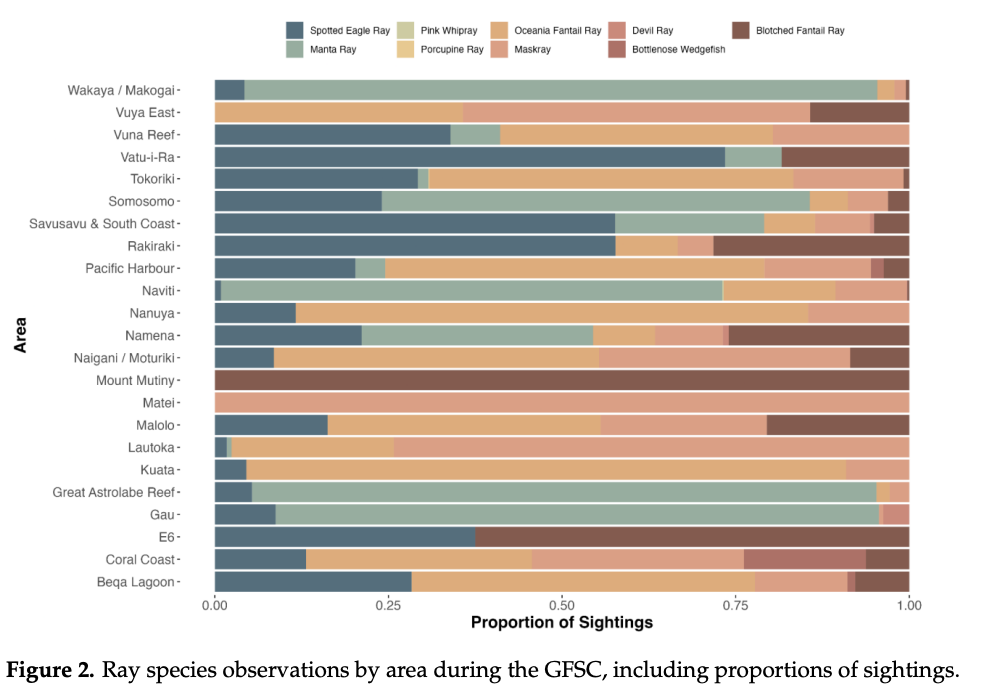
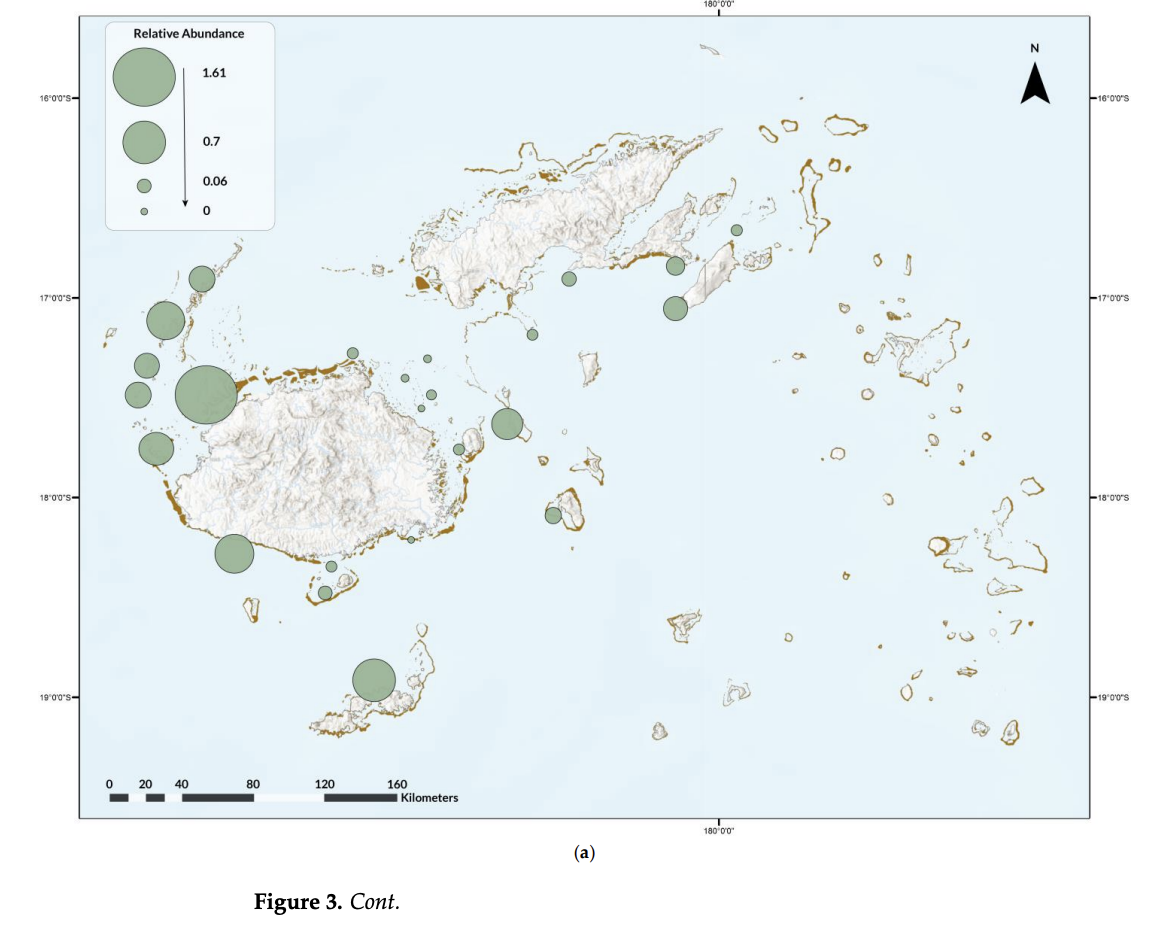
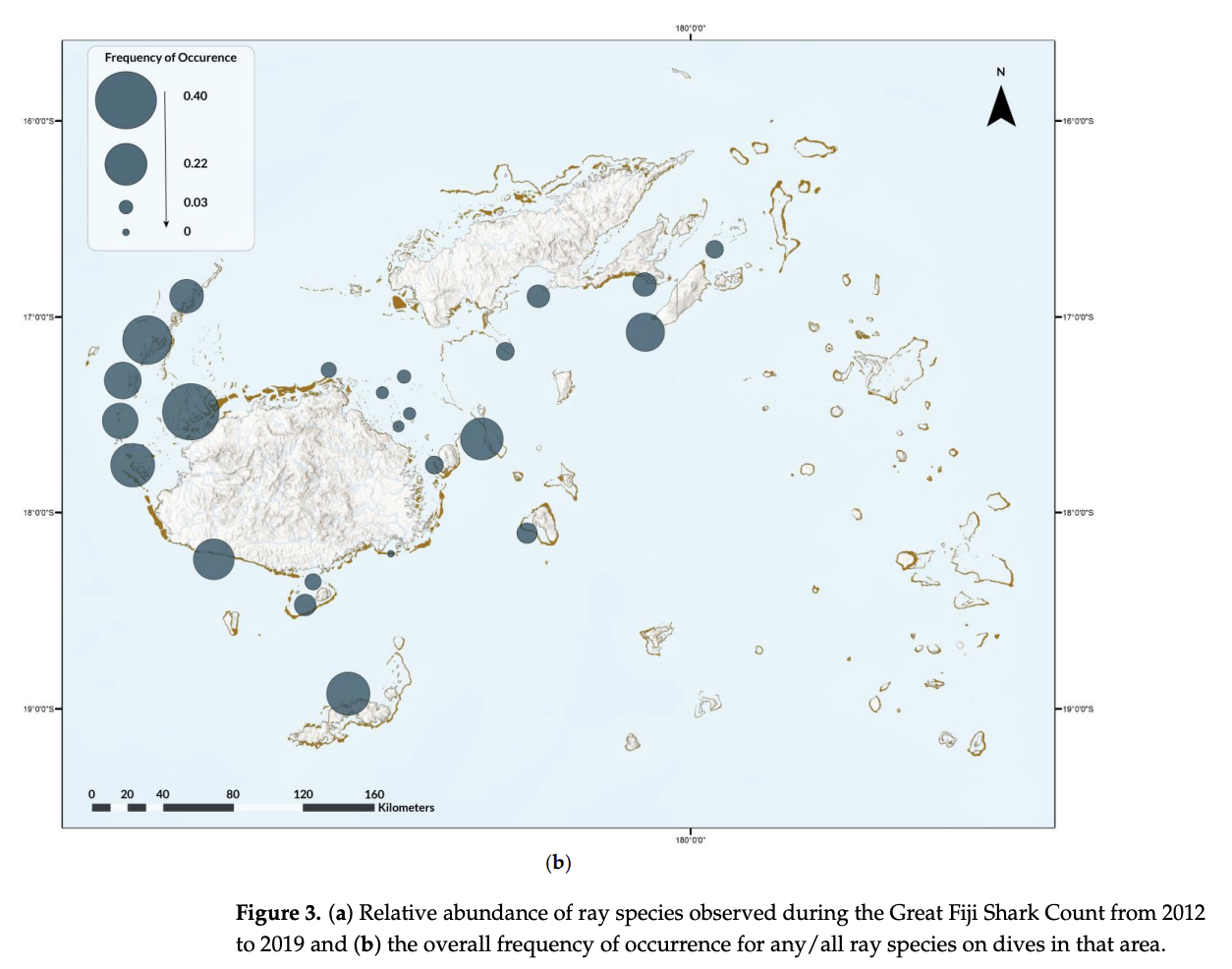
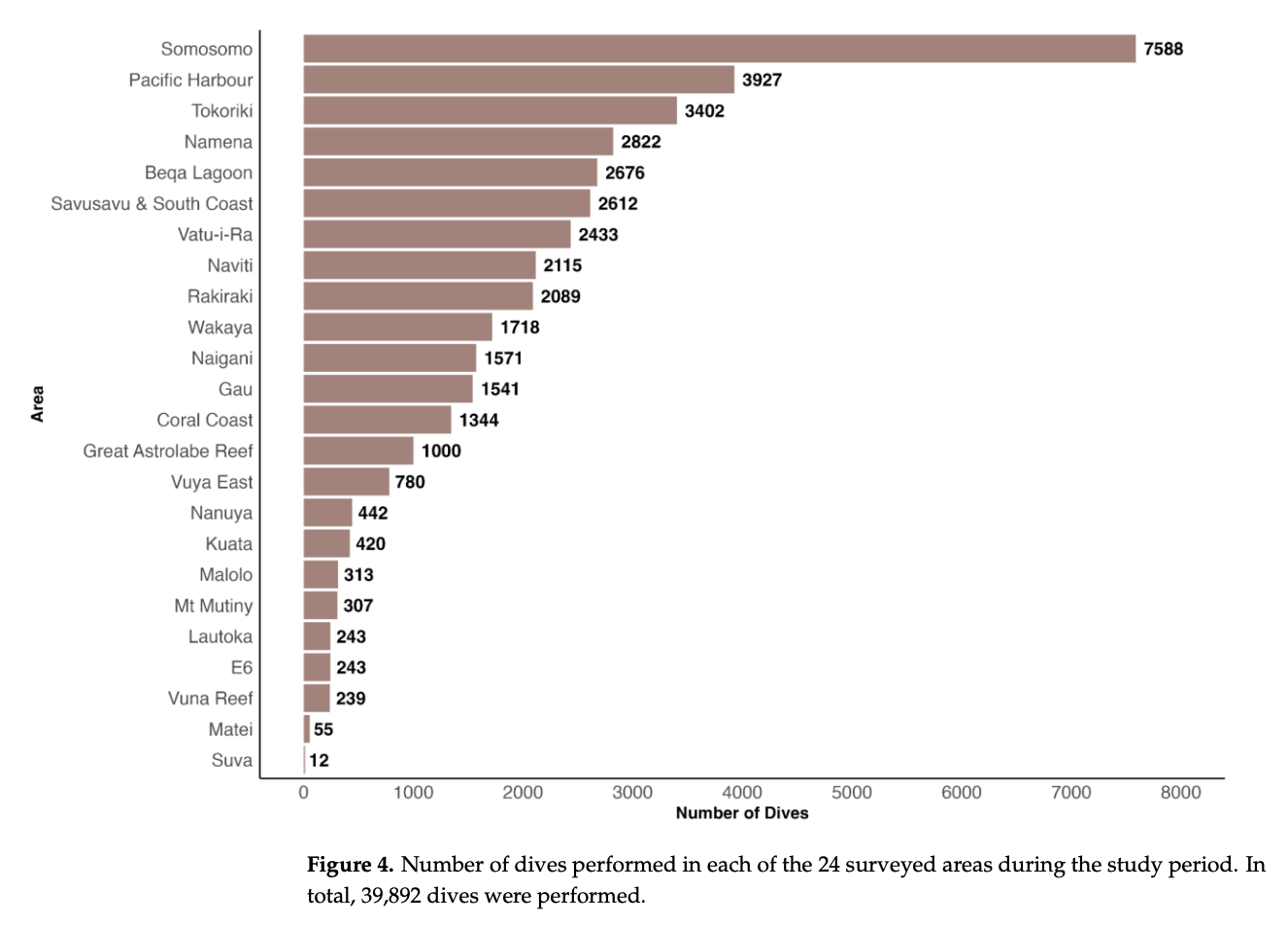
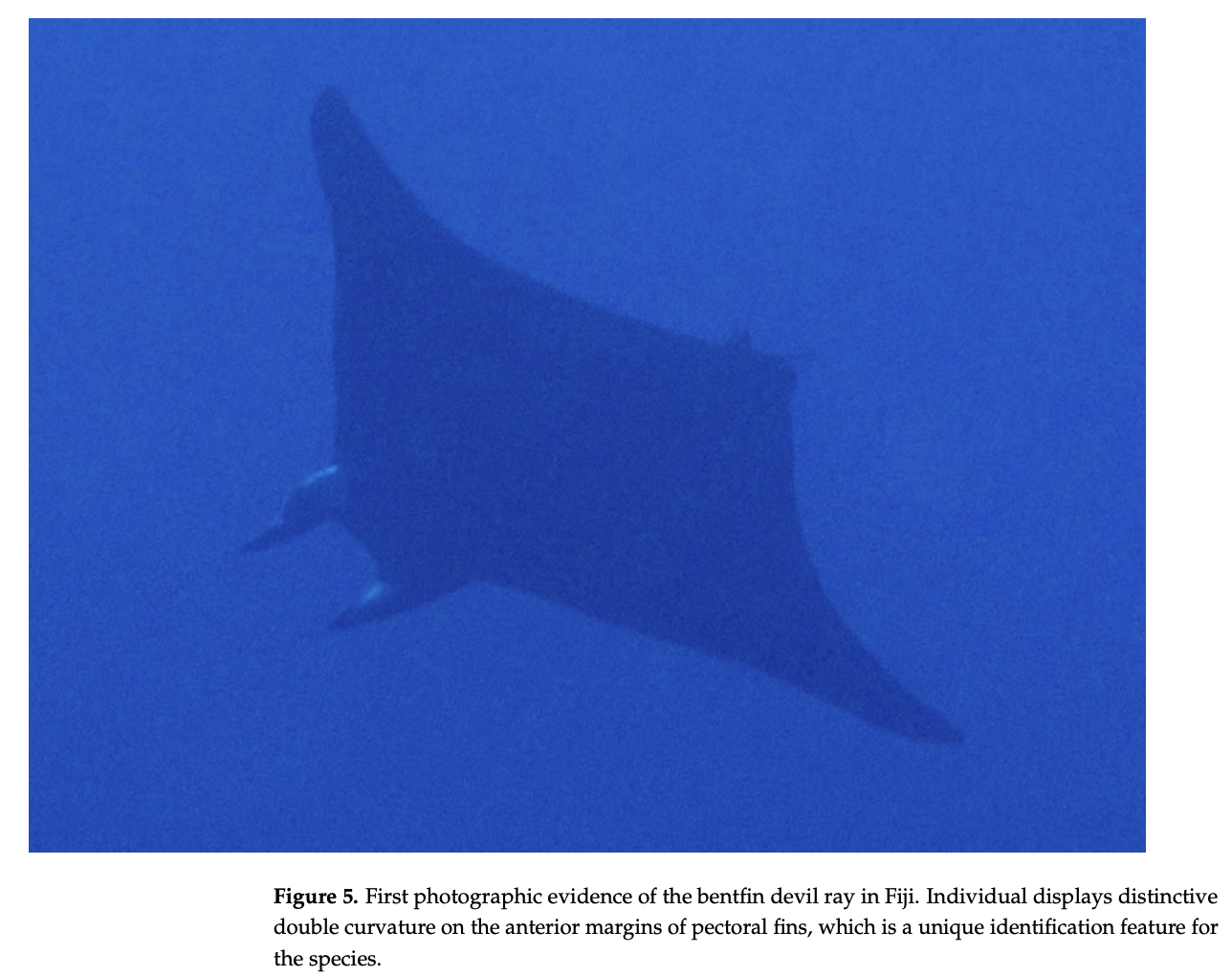
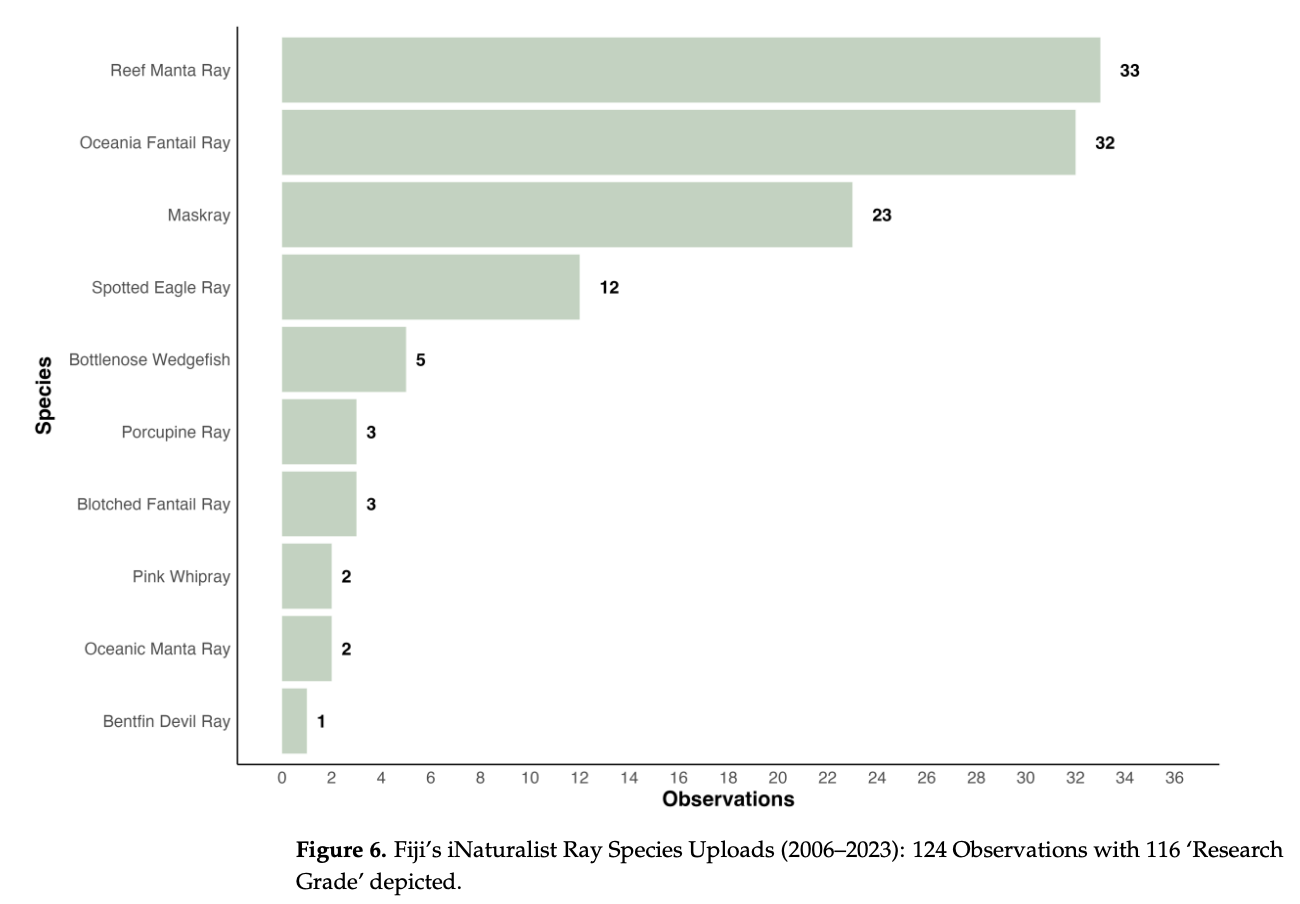
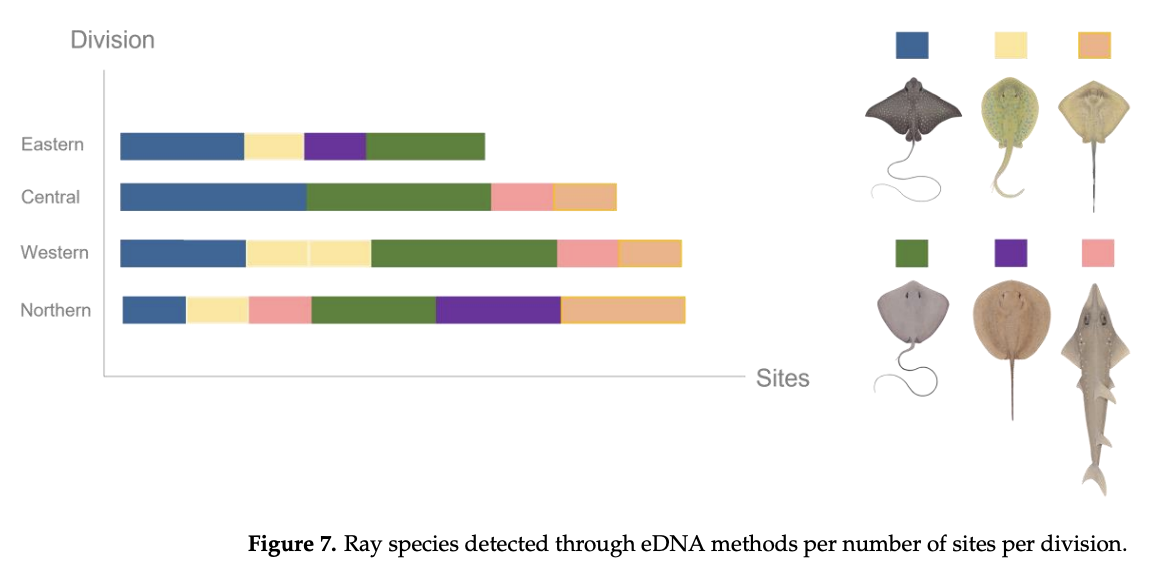
Summary: This study investigated batoid diversity in Fiji's waters, utilizing data from literature, participatory science, and environmental DNA. Nineteen batoid species across seven families were identified, with notable findings including the first photographic evidence of the bentfin devil ray in Fiji. Geographic patterns revealed prevalence of spotted eagle rays and maskrays in the Western Division. Interviews suggested sawfish presence. The study emphasized a multifaceted approach to understanding this understudied taxon, revealing 68.4% of species facing an elevated extinction risk. Caution is advised in interpreting older literature-based records, particularly for giant guitarfish and giant stingaree, but the synthesis contributes to a baseline for conserving ray populations in Fiji.
Abstract
“Over recent decades, elasmobranchs (sharks, rays, and skates) have been increasingly recognized among the world’s most threatened marine wildlife, leading to heightened scientific attention. However, batoids (rays and skates) are relatively understudied, especially in Large Ocean States of the Pacific. This synthesis compiles insights on batoid diversity and occurrence in Fiji’s waters by integrating a literature review, participatory science programs such as the Great Fiji Shark Count (GFSC) Initiative, Projects Abroad Fiji (PA), Manta Project Fiji (MPF), and iNaturalist, along with environmental DNA. Nineteen batoid species from seven families were identified: 19 species from the literature, 12 from participatory science programs, and six from eDNA analysis. Notably, this study provides the first photographic evidence for the bentfin devil ray (Mobula thurstoni, Lloyd, 1908) in Fiji. GFSC data indicated the highest species diversity in the Western Division, with spotted eagle rays (Aetobatus ocellatus, Kuhl, 1823) and maskrays (Neotrygon sp.) being observed most. In-person interviews conducted by PA provided information on the occurrence of wedgefishes and potentially sawfishes. MPF records and iNaturalist uploads were dominated by reef manta rays (M. alfredi, Krefft, 1868), while the pink whipray (Pateobatis fai, Jordan and Seale, 1906) yielded the most DNA sequences, suggesting the highest ray species diversity in the Northern Division. Overall, 68.4% of the species face an elevated extinction risk based on the International Union for the Conservation of Nature Red List criteria. Although caution is warranted with older literature-based records for the giant guitarfish (Glaucostegus typus, Anonymous [Bennett], 1830), giant stingaree (Plesiobatis daviesi, Wallace, 1967), and the lack of sawfish verification, this synthesis highlights the effectiveness of a combined methodological approach in establishing a reference point for the diversity and occurrence of this understudied taxon in Fiji.”
Author Affiliations
The University of the South Pacific,
The Manta Trust
Independent Researcher
Beqa Adventure Divers
University of Exeter
Fiji Shark Lab
Marine Ecology Consulting
Funded by
Deutsche Stiftung Meeresschutz
Contribution towards the Manta Trust's Strategic Plan
Goal 3: Strategic Objective 3.1: All manta and devil ray species in the regions where we work are fully protected and conserved through species management plans.
Goal 4: Strategic Objective 4.1: More people (a diverse range of individuals) local to manta and devil ray conservation initiatives in the regions where we work play an active role in the design and implementation of these initiatives.
Governance: Strategic Objective 5.2: We undertake hypothesis-driven scientific research on manta and devil rays.

